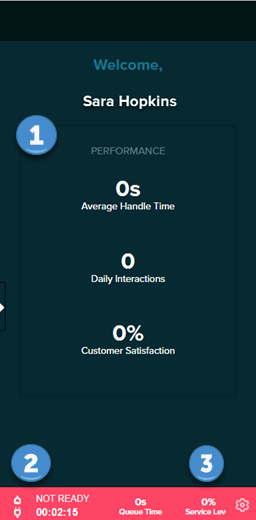Navigating
After you've logged in to , you'll see the welcome screen.

|
When you click your status on the global footer, the status menu is displayed.

|
Main Areas and Panels
After you accept an interaction, the view updates to display the primary content area. The contents of the primary content area depends on what type of interaction you are working with. To view specific overviews of the view for each interaction type, see:
Regardless of the interaction type, consists of the following main areas:

|

